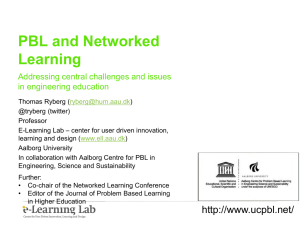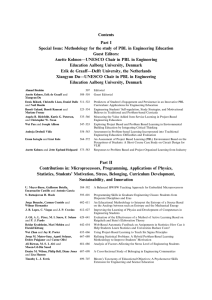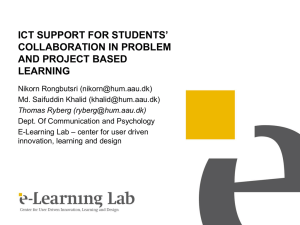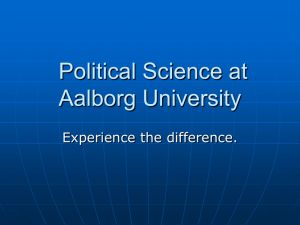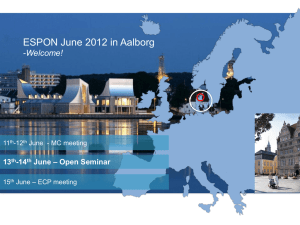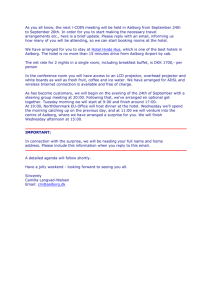Experimenting with social media and web 2 for DfL conf 2012
advertisement
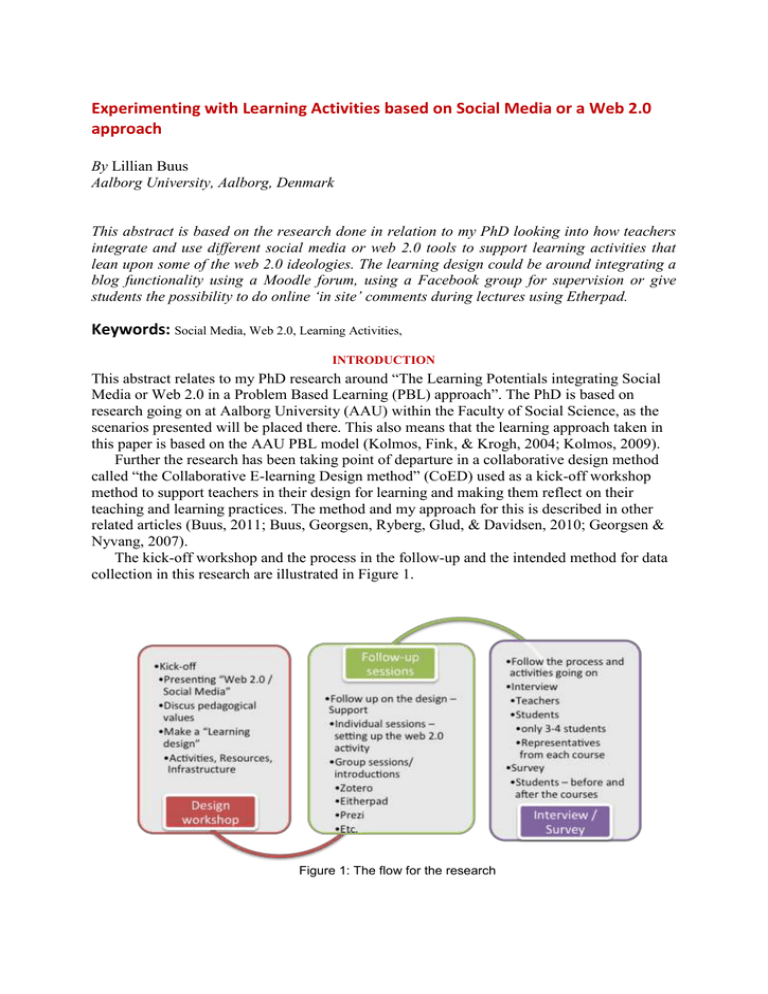
Experimenting with Learning Activities based on Social Media or a Web 2.0 approach By Lillian Buus Aalborg University, Aalborg, Denmark This abstract is based on the research done in relation to my PhD looking into how teachers integrate and use different social media or web 2.0 tools to support learning activities that lean upon some of the web 2.0 ideologies. The learning design could be around integrating a blog functionality using a Moodle forum, using a Facebook group for supervision or give students the possibility to do online ‘in site’ comments during lectures using Etherpad. Keywords: Social Media, Web 2.0, Learning Activities, INTRODUCTION This abstract relates to my PhD research around “The Learning Potentials integrating Social Media or Web 2.0 in a Problem Based Learning (PBL) approach”. The PhD is based on research going on at Aalborg University (AAU) within the Faculty of Social Science, as the scenarios presented will be placed there. This also means that the learning approach taken in this paper is based on the AAU PBL model (Kolmos, Fink, & Krogh, 2004; Kolmos, 2009). Further the research has been taking point of departure in a collaborative design method called “the Collaborative E-learning Design method” (CoED) used as a kick-off workshop method to support teachers in their design for learning and making them reflect on their teaching and learning practices. The method and my approach for this is described in other related articles (Buus, 2011; Buus, Georgsen, Ryberg, Glud, & Davidsen, 2010; Georgsen & Nyvang, 2007). The kick-off workshop and the process in the follow-up and the intended method for data collection in this research are illustrated in Figure 1. Figure 1: The flow for the research From the kick-off workshop emerged three scenarios, which are the ones I would like to shortly touch further upon in this abstract. THREE DIFFERENT SCENARIOS ON INTEGRATION OF SOCIAL MEDIA OR WEB 2.0 The first scenario, the teacher integrates a blog into their lectures to support the students in collaborating and sharing work connected to the lecture content. This is preparing the student for using the blog at the final joint workshop session during a two-day period, where students in groups had to apply different theories to the same case and discuss these theoretical issues on the blog. Such collaboration potentially is beneficial for all students. The second scenario actually consists of two activities in parallel. In scenario 2a students are offered unlimited supervision in relation to a small group project. The supervision takes place using group feature, which supports sharing and collaboration among students, and Facebook was chosen among the students as the platform. A Facebook group was established for supervision, and students had one and a half week unlimited supervision before handing in their group project. Scenario 2b is giving the students a presentation to two web 2.0 tools for sharing and collaboration, enabled to support them in their sharing and collaboration as a group (class) and as smaller groups. The tools presented were Diigo (a social bookmarking tool) and Zotero (a social reference tool) as two tools among others similar tools, students could benefit from in their collaboration both in courses and project work. The third scenario deals with online on site commenting on theoretical questions and issues coming up during lectures using a same time web 2.0 tool called Etherpad1. This activity is going on during the course and gives the teacher a view of where the students have issues related to the theories or methods introduced during lecture. DISCUSSION Interesting perspectives on how to integrate social media or web 2.0 into ones learning has emerged from this research, and I am just about to do my analysis on the data I have gathered up until now. One of the issues in common in the three scenarios is the aim to practice such a collaborative approach and thereby support the students in gaining an understanding of what knowledge sharing means. REFERENCES Buus, L. (2011). How to integrate social media in a PBL approach. ECEL Conference paper. Buus, L., Georgsen, M., Ryberg, T., Glud, L. N., & Davidsen, J. (2010). Developing a Design Methodology for Web 2.0 Mediated Learning. I L. Dirckinck-Holmfeld, V. Hodgson, C. Jones, M. de Laat, D. McConnell, & T. Ryberg (Red.), Proceedings of the 7th International Conference on Networked Learning, Networked Learning (s. 952-960). Aalborg. Georgsen, M., & Nyvang, T. (2007). Collaborative e-Learning Design Method (CoED) ( No. No. 12). e-Learning Lab Publication Series (s. 25). E-Learning Lab: Aalborg University. Kolmos, A. (2009). Problem-Based and Project-Based Learning. University Science and Mathematics Education in Transition (s. 261-280). Hentet fra http://dx.doi.org/10.1007/978-0-387-09829-6_13 Kolmos, A., Fink, F. K., & Krogh, L. (Red.). (2004). The Aalborg PBL model - progress, diversity and challenges. Aalborg: Aalborg University Press. 1 http://ietherpad.com - is a web 2.0 based tool given multiple people the possibility to edit the same document simultaneously, any changes are instantly reflected on everyone's screen.
